Artificial intelligence (AI) is changing the world of prosthetic limbs. What was once a simple mechanical replacement is now becoming an intelligent, responsive extension of the human body. AI-powered prosthetics are getting smarter, adapting to users’ movements, and even learning from experience. Over the next five years, these advancements will make prosthetics more functional, comfortable, and lifelike than ever before.
This article explores how AI is shaping the future of prosthetic limbs, from mind-controlled technology to self-adjusting limbs that adapt to different activities. If you’re wondering what the next decade holds for prosthetic innovation, keep reading.
AI-Powered Prosthetics: Learning and Adapting in Real Time
One of the biggest changes AI is bringing to prosthetic technology is the ability to learn and adapt. Traditional prosthetic limbs required manual adjustments, but AI-powered prosthetics can now analyze movements and make instant modifications for better functionality.
With the help of machine learning, modern prosthetics study a user’s walking or gripping patterns over time. The more the limb is used, the better it understands movement preferences. This means that over a few weeks, an AI-powered prosthetic can predict how the user wants to walk, run, or pick up objects, making movements smoother and more natural.
Another major advancement is the ability to adjust in real time. AI-driven prosthetics use sensors to detect the user’s speed, terrain, and pressure. If a person is walking on a rough surface, the prosthetic can automatically shift to provide better stability. This kind of automatic response reduces strain on the body and makes prosthetic use more intuitive than ever.
Mind-Controlled Prosthetics: Turning Thought into Movement
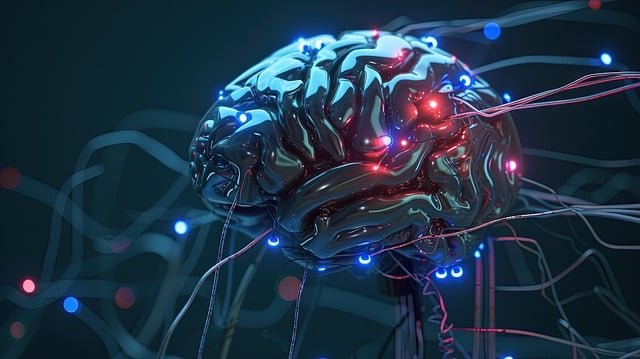
By 2030, AI-powered brain-computer interfaces (BCIs) will allow people to control prosthetic limbs with their thoughts. This technology is already being tested in research labs, and early results show that mind-controlled prosthetics can work almost as seamlessly as real limbs.
BCIs function by reading brain signals and translating them into movement. When a person thinks about moving their fingers or lifting their arm, AI interprets these signals and sends commands to the prosthetic. Unlike traditional prosthetics that rely on manual controls, BCIs make movement feel completely natural.
The next step in this technology will be improving response speed and accuracy. Researchers are working on AI systems that refine how the brain and prosthetic limb communicate. By 2027, experts predict that mind-controlled prosthetics will be fast enough to handle complex tasks like writing, playing an instrument, or even sports activities.
AI and Sensory Feedback: Restoring the Sense of Touch
One of the biggest challenges in prosthetic technology has been the lack of sensory feedback. AI is now solving this problem by integrating advanced sensors that mimic the feeling of touch.
Future AI-powered prosthetics will have sensors embedded in fingertips and palms. These sensors detect pressure, texture, and even temperature, sending signals to the user’s nervous system. This means that a person wearing a prosthetic hand will be able to feel the difference between a soft piece of fabric and a hard metal surface.
Another breakthrough in this field is pain detection and pressure control. AI-driven sensory systems can prevent users from applying too much force when gripping objects, reducing the risk of accidental drops or damage. By 2030, these advanced sensory features will be widely available, making prosthetic limbs more intuitive and lifelike.
Self-Adjusting Prosthetics: The End of Manual Tuning
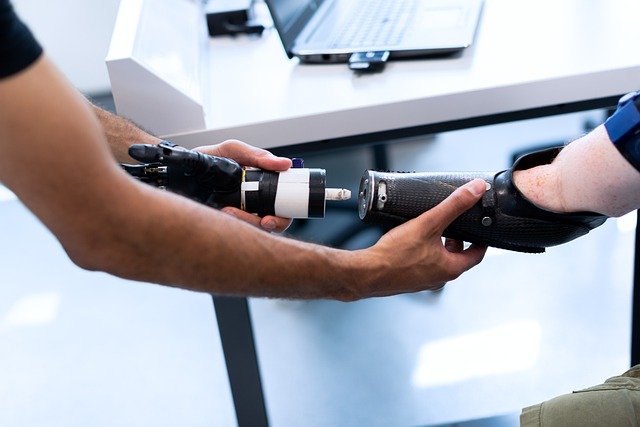
In the past, prosthetic users had to visit a specialist regularly to adjust their devices. AI is changing this by enabling self-adjusting prosthetics that modify their fit and performance automatically.
Using AI-powered sensors, these prosthetics detect changes in muscle movement, weight distribution, and even swelling in the limb. If a user’s residual limb swells slightly during hot weather, the prosthetic can adjust its grip to prevent discomfort. Similarly, if the user starts running, the AI can modify joint stiffness to improve stability.
Another key benefit of self-adjusting prosthetics is personalized comfort. AI can monitor daily activities and create a unique movement pattern for each user. By analyzing data over weeks or months, the prosthetic fine-tunes itself to provide the best possible fit and function without requiring human intervention.
AI in Lower-Limb Prosthetics: Walking with More Stability
AI is making lower-limb prosthetics more intelligent and responsive. One of the biggest advancements in this area is adaptive gait technology, which allows prosthetic legs to adjust based on walking patterns and terrain.
For example, AI-powered prosthetic legs can sense whether a person is walking on flat ground, climbing stairs, or walking uphill. Instead of requiring the user to make manual adjustments, the limb automatically adapts to provide better stability and reduce the risk of falls.
Another exciting development is AI-driven shock absorption. Traditional prosthetic legs can feel rigid, but future AI-powered models will soften or stiffen based on the impact level. This is especially useful for athletes and active individuals who need different levels of support depending on their activity.
AI and 3D Printing: Faster and More Affordable Prosthetics

AI is also improving the way prosthetics are designed and manufactured. With the help of 3D printing, AI-powered software can create customized prosthetic limbs in a fraction of the time it takes using traditional methods.
AI-driven design programs can analyze a user’s body structure and generate a prosthetic model that perfectly fits their limb. This ensures better comfort and functionality. In addition, AI can test different materials and structures in a virtual environment before manufacturing, reducing production errors and costs.
By 2030, AI-powered 3D printing will make high-quality prosthetic limbs more affordable. Instead of waiting weeks for a custom prosthetic, users will be able to receive a fully personalized limb within days, improving accessibility for people around the world.
AI and Prosthetic Maintenance: Predicting and Preventing Failures
Just like any piece of technology, prosthetic limbs require maintenance. AI is helping users stay ahead of potential issues by predicting when repairs are needed before a problem occurs.
AI-powered diagnostics can monitor a prosthetic’s performance in real time. If a sensor detects unusual wear and tear, it can alert the user to schedule maintenance before the issue worsens. This helps prevent unexpected failures and increases the lifespan of the prosthetic.
Future AI systems will also include remote troubleshooting. Instead of visiting a specialist for minor repairs, users will be able to receive AI-driven recommendations on adjusting settings or fixing small issues from home. This will save time and reduce costs for prosthetic users.
AI and Personalized Training: Making Rehabilitation Easier
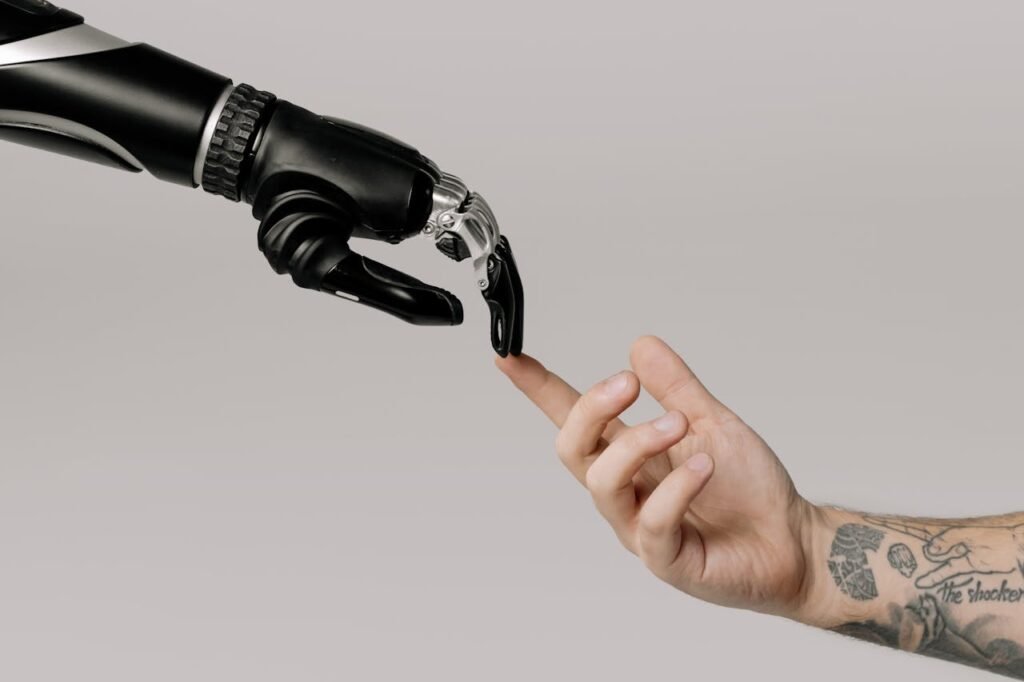
Adapting to a new prosthetic limb can be challenging, but AI is making the rehabilitation process smoother and more efficient.
AI-powered training programs use gamification to help users practice movements in a fun and engaging way. Virtual reality (VR) simulations allow users to interact with objects and improve coordination before using their prosthetic limb in real-world situations.
In addition, AI-driven rehab programs analyze a user’s progress and provide personalized exercises based on their performance. By 2030, these systems will be widely available, reducing the time it takes for new users to adjust to their prosthetic limbs.
The Role of AI in Enhancing Prosthetic Control and Accuracy
One of the biggest breakthroughs AI is bringing to prosthetic limbs is precision control. Traditional prosthetics relied on simple mechanical movements, but AI-powered models now allow for highly accurate, fine motor control that closely mimics natural limb function.
AI achieves this by continuously analyzing the user’s movements and adjusting the prosthetic’s response. For example, an AI-driven hand can detect the level of pressure needed to pick up a delicate object like a glass of water versus a heavier object like a book. This level of precision prevents accidental drops and improves the overall user experience.
Additionally, AI helps stabilize movement for those using prosthetic arms or legs. If a person struggles with balance or coordination, AI can adjust the prosthetic’s movements in real time to provide extra support. This results in smoother, more natural motion that requires less effort from the user.
Neural Networks and AI: The Future of Prosthetic Learning
Neural networks are at the heart of AI-driven prosthetics. These advanced systems allow prosthetic limbs to continuously learn and improve based on user habits.
Unlike traditional prosthetics, which function the same way every time, AI-powered limbs become better over time. For example, a person using a bionic arm might struggle with a certain movement initially, but after repeated attempts, the AI learns the correct pattern and improves responsiveness.
By 2030, AI-powered neural networks will make prosthetic limbs feel almost indistinguishable from natural limbs. These systems will recognize patterns in muscle contractions, nerve signals, and brain activity, allowing for near-instantaneous response times and highly personalized movement accuracy.
The Role of AI in Emotional and Psychological Adaptation

Using a prosthetic limb is not just a physical challenge—it also has emotional and psychological aspects. AI is now being used to improve the mental well-being of prosthetic users by making the experience more natural and less frustrating.
One of the biggest benefits AI brings is reducing the learning curve. Many people struggle with adapting to a new prosthetic, but AI-driven systems provide instant feedback, coaching users through the process. This reduces frustration and builds confidence.
Additionally, AI-powered prosthetics are being designed to mimic natural movement as closely as possible. The more lifelike the movement, the more comfortable users feel in social situations. By making prosthetics more intuitive, AI helps people regain independence and feel more at ease in their daily lives.
AI and the Future of Fully Integrated Bionic Limbs
Looking ahead to 2030 and beyond, AI is paving the way for fully integrated bionic limbs that connect directly to the human nervous system. These advanced prosthetics will not only respond instantly to brain signals but also provide natural sensory feedback, making them feel like real body parts.
Scientists are already developing AI-powered interfaces that allow prosthetics to communicate directly with the spinal cord and peripheral nerves. This technology will enable a level of control and sensation that was previously thought impossible.
In the next decade, these advancements will likely lead to a future where people with limb loss no longer see prosthetics as replacements but as true extensions of their body. AI will continue to bridge the gap between biology and technology, making prosthetic limbs smarter, faster, and stronger than ever before.
AI and Augmented Reality (AR): Enhancing Prosthetic Training and Control
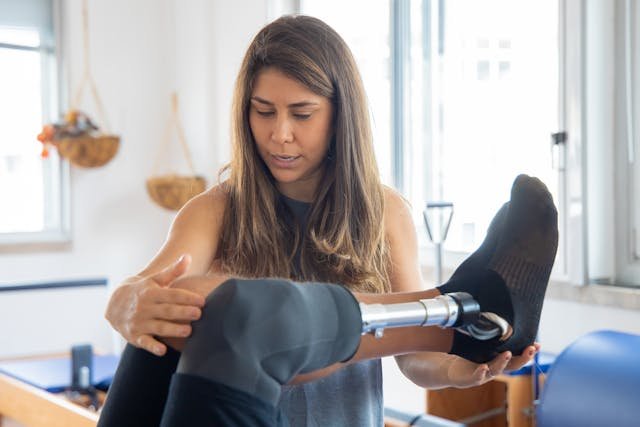
Augmented reality (AR) is becoming a powerful tool in prosthetic training, and when combined with AI, it is set to transform how users interact with their artificial limbs.
One of the biggest challenges prosthetic users face is learning how to use their new limb effectively. AI-driven AR systems will provide real-time guidance, displaying visual cues through smart glasses or phone apps. These cues will help users position their prosthetic limb correctly, improve grip strength, and refine their movements.
Beyond training, AI-enhanced AR will allow users to visualize real-time diagnostics of their prosthetic limb. Imagine wearing AR glasses that show exactly how much force your bionic hand is applying or how your prosthetic leg is adapting to the terrain. This level of insight will help users fine-tune their movements and get the most out of their prosthetics.
AI and Cloud Connectivity: Smarter Prosthetics That Improve Over Time
AI-powered prosthetics are not just getting smarter individually—they are also becoming part of a connected ecosystem. By 2030, cloud-based AI will allow prosthetic limbs to continuously update and improve based on global data.
With cloud connectivity, a prosthetic limb can access a vast database of movement patterns, allowing it to recognize and adapt to new activities more quickly. For example, if someone starts learning a new sport or musical instrument, their prosthetic can download movement data to assist with those specific tasks.
Additionally, cloud AI will enable remote monitoring and adjustments. Prosthetic specialists will be able to fine-tune a user’s limb settings remotely, reducing the need for frequent clinic visits. This will be especially useful in rural areas where access to prosthetic care is limited.
AI and Biomechanics: Creating a More Natural Walking and Movement Experience
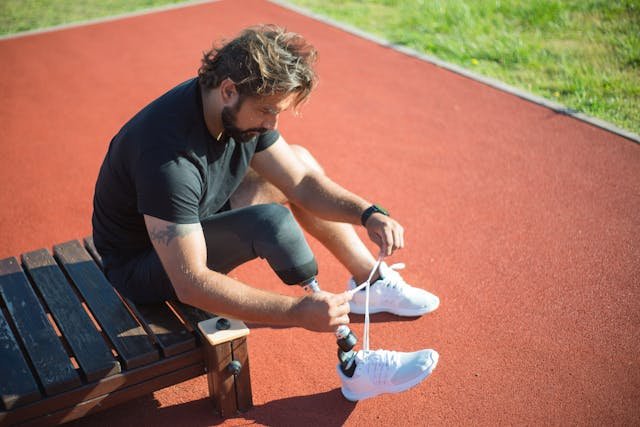
One of the biggest goals in prosthetic technology is making artificial limbs move as naturally as possible. AI is helping achieve this by improving biomechanics—the study of how the body moves.
Using machine learning, AI can analyze the way a person walks, runs, or even gestures, then adjust the prosthetic limb accordingly. Future AI-powered legs will automatically shift weight distribution, joint flexibility, and even muscle movement patterns to match the user’s natural gait.
For upper-limb prosthetics, AI-driven biomechanics will allow for more fluid arm and hand movements. Instead of robotic, mechanical motions, AI-powered prosthetic arms will move with the grace and flexibility of a real limb, allowing users to perform complex tasks with ease.
Ethical and Social Considerations of AI in Prosthetics
As AI-powered prosthetics become more advanced, new ethical questions will arise. How much should a prosthetic limb enhance human abilities? Will AI-driven bionics create a divide between those who can afford them and those who cannot?
One major concern is accessibility. While AI prosthetics are becoming more affordable due to 3D printing and cloud computing, there is still a risk that only a select few will have access to the most advanced technology. Organizations like Robobionics are working to ensure that AI-powered prosthetics remain accessible to people of all economic backgrounds.
Another issue is data privacy. AI-driven prosthetics collect vast amounts of personal data, from movement patterns to neural activity. Ensuring that this data remains secure and is not misused will be a key focus in the coming years.
Despite these challenges, the future of AI in prosthetics remains incredibly promising. With the right policies and ethical considerations in place, AI-driven bionic limbs will empower millions of people worldwide.
Conclusion
Artificial intelligence is transforming prosthetic technology, making limbs smarter, faster, and stronger. From mind-controlled movement to real-time sensory feedback, AI-powered prosthetics are bringing life-changing improvements to people with limb loss.
By 2030, we can expect self-adjusting prosthetics, AI-driven rehabilitation, and even predictive maintenance to become standard features. These advancements will not only enhance functionality but also improve comfort, making prosthetic limbs feel like a true extension of the human body.
If you want to experience the latest innovations in AI-powered prosthetics, book a free demo of Grippy™ today and see how cutting-edge technology is shaping the future of prosthetic limbs. Contact Robobionics now to learn more about our advanced solutions designed to improve mobility and independence.



